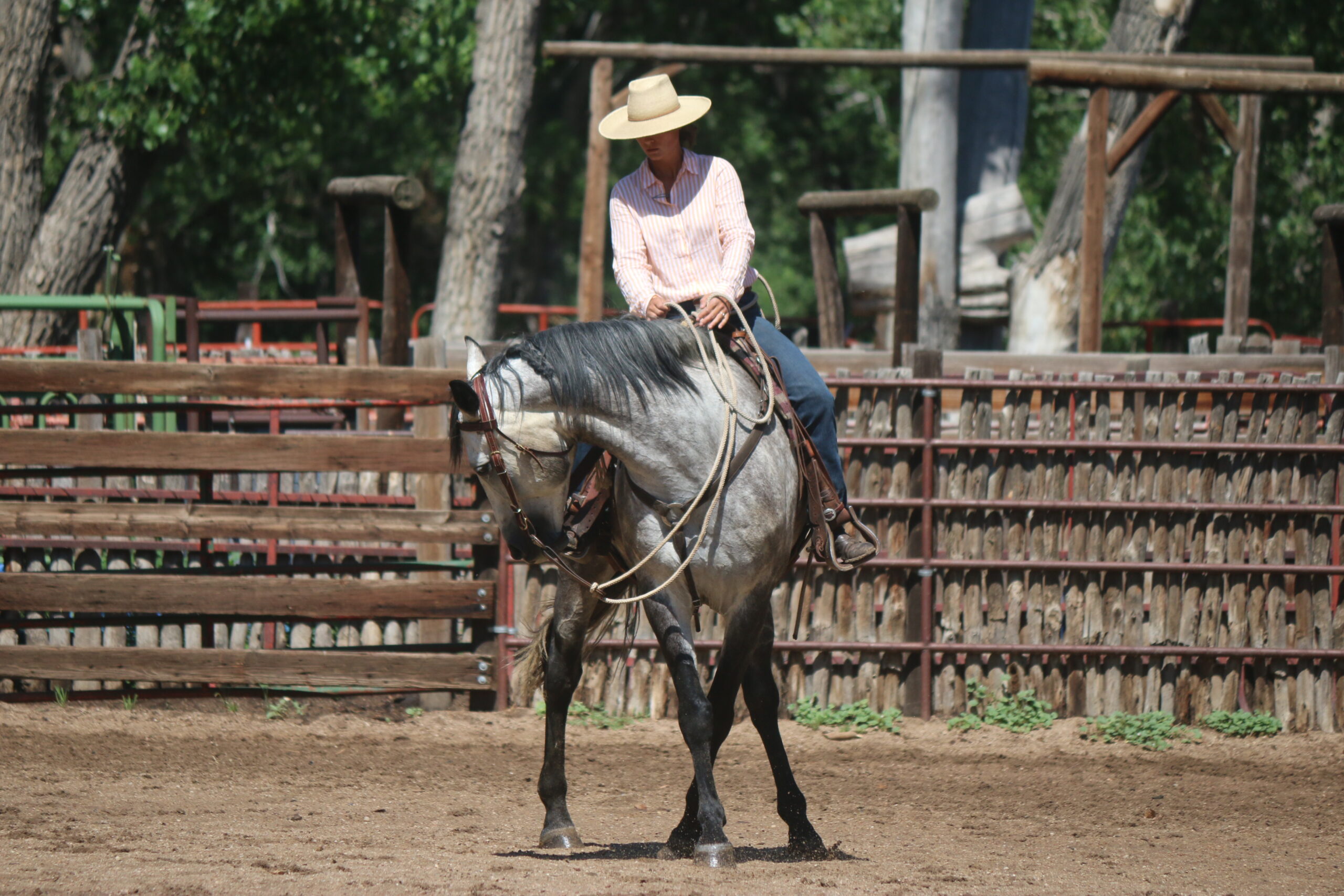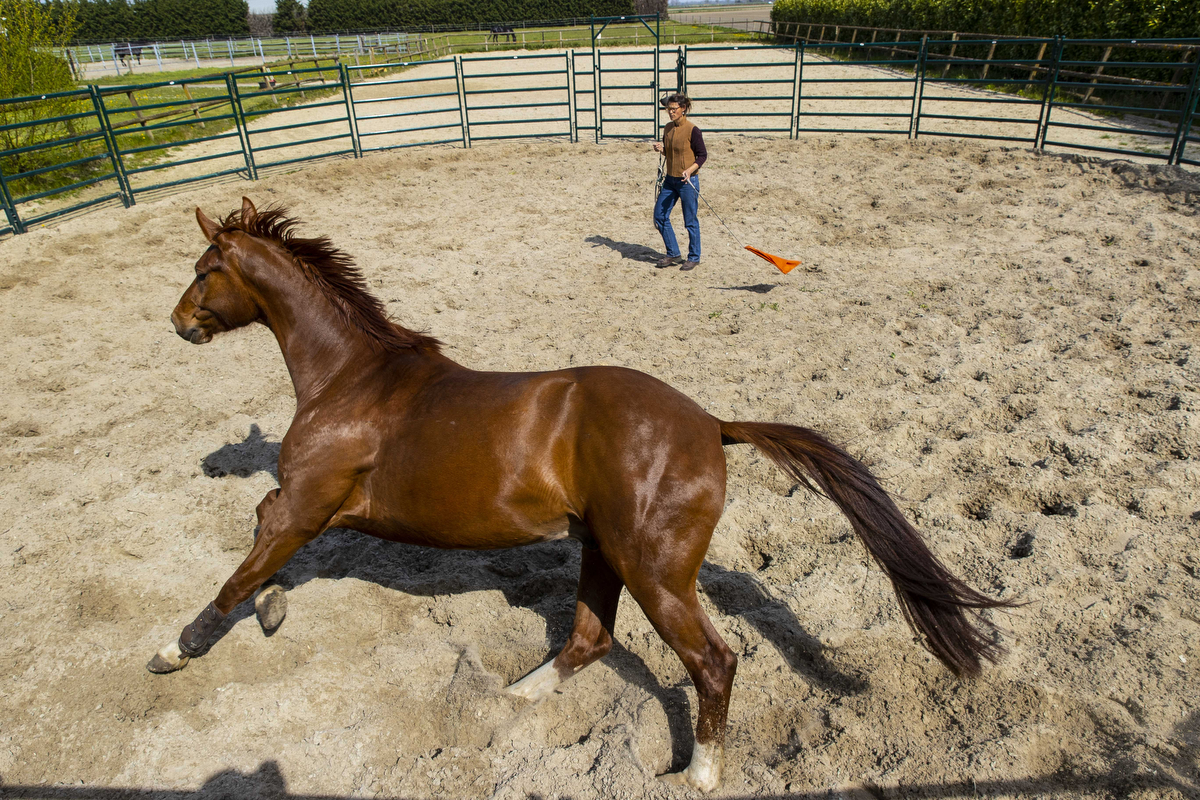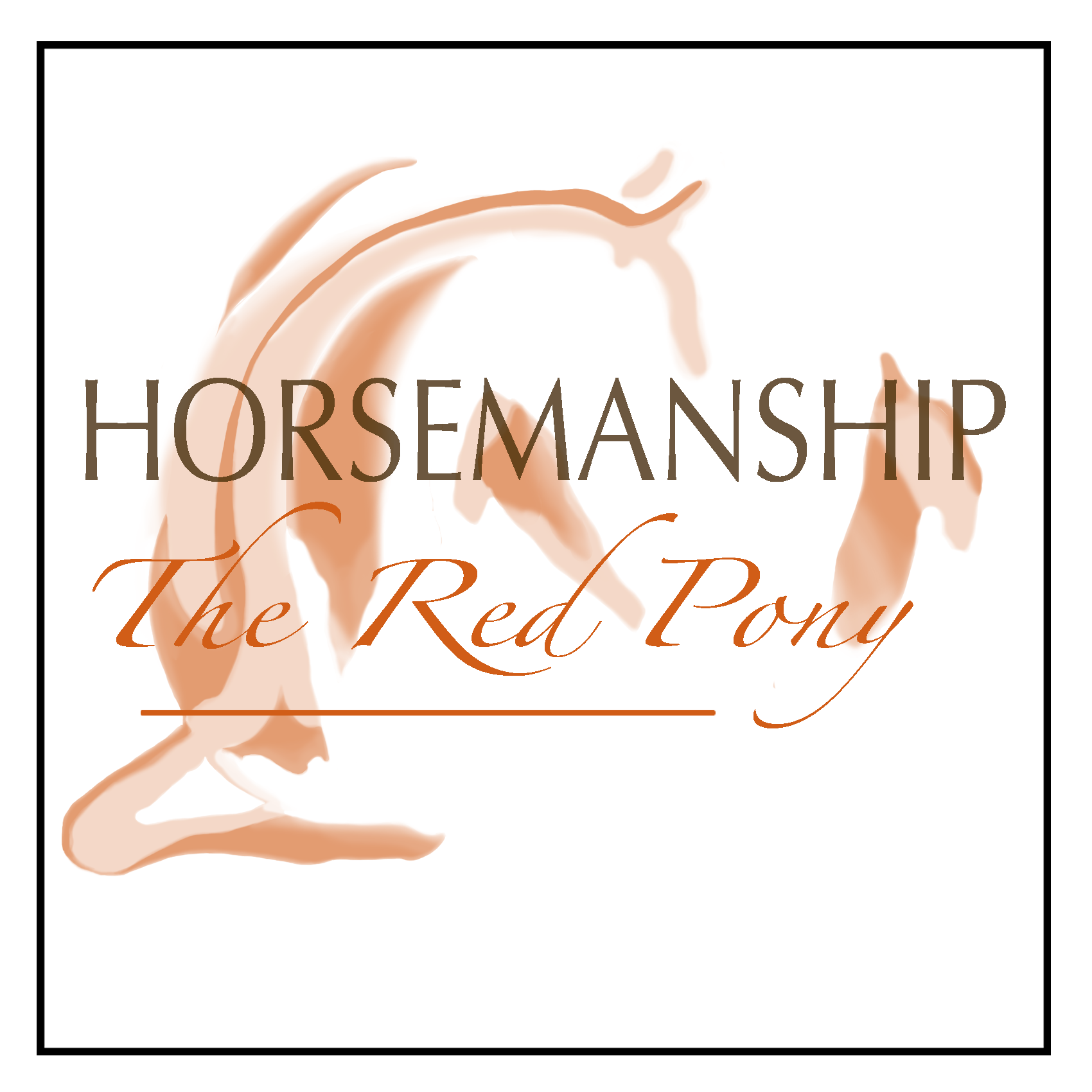
Horses know all about “feel”. They don’t have a clue, however, about our concept of time. We, on the other hand, know everything about “time”, but could benefit from learning more about using “feel” in handling and riding our horses.
Good horsemanship…
…starts with paying more attention to the little things. It begins with a growing awareness of the way you handle your horse on a daily basis. For a horse, the little things are as important as the big things; for you that lead change might be more important than the way in which your horse lets you lead him from the pasture to the grooming area, but for a horse it’s all the same. All that you do with a horse has meaning to them. The quality of your leading will translate to the quality of your riding: a horse that is heavy to lead will be heavy to ride.


Good horsemanship…
…starts on the ground. Yes, again!
Learning to do the basic groundwork with quality is tough in the beginning, but after a while you won’t know how you ever got along without it.
Groundwork, essentially, is about being safe. It is about knowing how to direct the energy of our horse, by being able to place the feet where we want them, how we want them, and at what speed we want them. Generally the mental connection with the horse is best achieved by first making a connection to the feet. This starts to make sense at the moment that we realise that herd animals among each other are always trying to figure out who is moving whose feet. Within herds, the entire social structure depends on this.
Groundwork lays the foundation for all the later work with our horses. It helps us, first, to set boundaries and be safe, and second, to help our horses to become braver, calmer, more confident and more reliable to be around and to ride. The groundwork prepares our horses for living in our (human) world – it helps them navigate the scary things that almost every domesticated riding horse will encounter during his life, like trailers, veterinary clinics, vaccinations, wormers, traffic, the flower pots in high-strung competition arenas, bleachers, sound- and music installations, and so on. All these things are naturally frightening to the horse and activate his sense of self-preservation. The groundwork helps the horse to start behaving more like a partner to the human, and less like a prey animal.
“The horse may not be doing the thing that is the right thing for what the rider is asking him, but as far as the horse is concerned he is doing the right thing.”
– Tom Dorrance
Good horsemanship…
…helps us, as humans, to behave less like predators, and more like partners to our horses. It helps us to become good leaders, leaders who are worth following both on the ground and in the saddle. Good leadership has to do with discipline and respect, but not with fear. Horses, as herd animals, are used to following – in fact, they would rather follow than lead. A good leader doesn’t just decide what will happen – he makes sure that the horse is safe and doesn’t get into trouble. This brings with it great responsibility. Depending on how you look at it, we could say that each horse owner took on this responsibility upon buying the horse. By working on our horsemanship skill we make our horse a promise. We tell him: “You can follow me, I know where we’re going. You are safe with me”. By proving our leadership to our horses time and time again, we can win his respect ànd his friendship.

Good horsemanship…
…is not just about doing groundwork. It’s also about working on your riding. Better riding requires of us that we develop an independent seat, and hands that help instead of hinder the horse in his movement. Better riding looks and feels soft. Horsemanship helps you becoming more aware of the habits you might have in the saddle that don’t, or no longer, help you.
“In order for the horse’s lightness to carry over when a person sits up there, lightness between the horse and the person has to be built in on the ground and experienced there before they ride him. This is done by using feel, from the start. The person should be focused on getting the best possible connection with the horse on the ground, through feel, if they want to have those parts of the horse (the capacity for lightness and collection) available to them when they ride.”
– Bill Dorrance
Good horsemanship…
…crosses disciplinary boundaries. Improving your horsemanship skills helps your horse to become a braver, more balanced, all-round riding horse, regardless of the discipline of your choice.
Safety, trust, and respect, the core principles in the groundwork, carry over to the ridden work. Preparing your horse for riding through the groundwork will enable your horse to be in a learning frame of mind once in the saddle, every ride. This makes our rides and training a lot more effective, a lot more safe, and a lot more fun!
